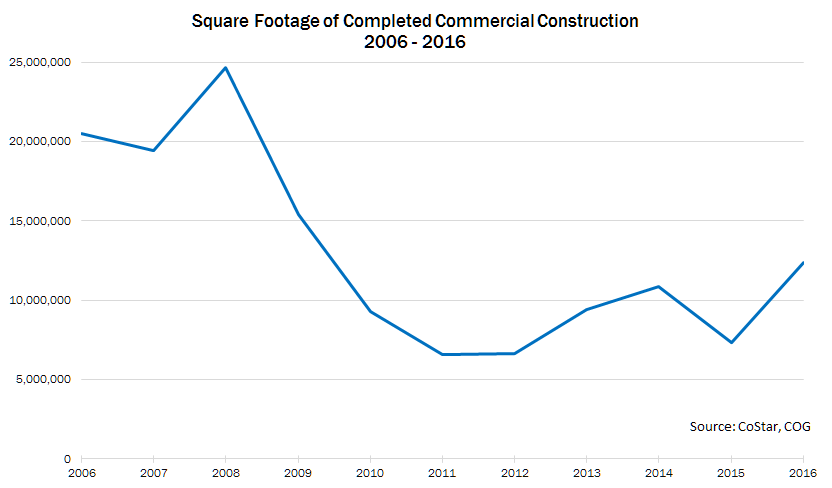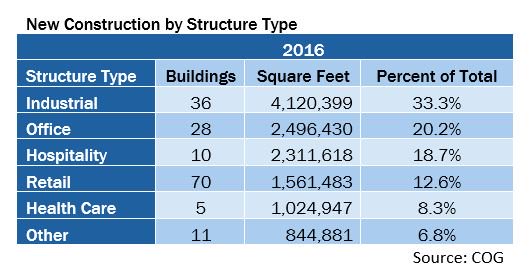Commercial construction in the metropolitan Washington region is beginning to rebound, increasing 69 percent between 2015 and 2016, according to the Metropolitan Washington Council of Governments (COG) 2016 Commercial Construction Indicators Report.
The region added 160 new buildings and more than 12 million square feet of new commercial space in 2016. This represents an increase of more than five million square feet from 2015, making it the highest level of commercial construction in seven years.

In 2016, the District of Columbia added 2.3 million square feet of commercial construction, an increase of 63 percent from 2015; suburban Maryland added 4.4 million square feet, an increase of 157 percent from 2015; and Northern Virginia added 5.7 million square feet, an increase of 37percent from 2015.
The report looks at trends in location, structure type, and size of new commercial development – completed non-residential projects, including office, retail, industrial, healthcare, and hospitality properties – in metropolitan Washington.
Of the 160 new buildings, industrial space held the greatest share of commercial construction in 2016, creating 33 percent of the region’s new space. This was followed by office space representing 20 percent, hospitality space at 19 percent, and retail space at 13 percent of all commercial construction.

“Overall commercial construction saw a significant increase in 2016 primarily due to the strong performance of industrial space, such as data centers and warehouses,” said John Kent, COG Regional Planner and report author. “However, both the office and retail sectors experienced below average construction compared to pre-recession levels, which poses a challenge for the region, since new office and retail space typically bring more jobs.”
Although industrial space made up most of the new construction in 2016, the largest single project completed was in the hospitality space – the 24-story, 945,288 square foot MGM National Harbor Hotel Casino in Prince George’s County.
“Commercial construction is an economic indicator,” said Paul DesJardin, COG Community Services and Planning Director. “It is a positive sign that commercial construction is on the rise. It means companies are investing in our region and the region is growing.”